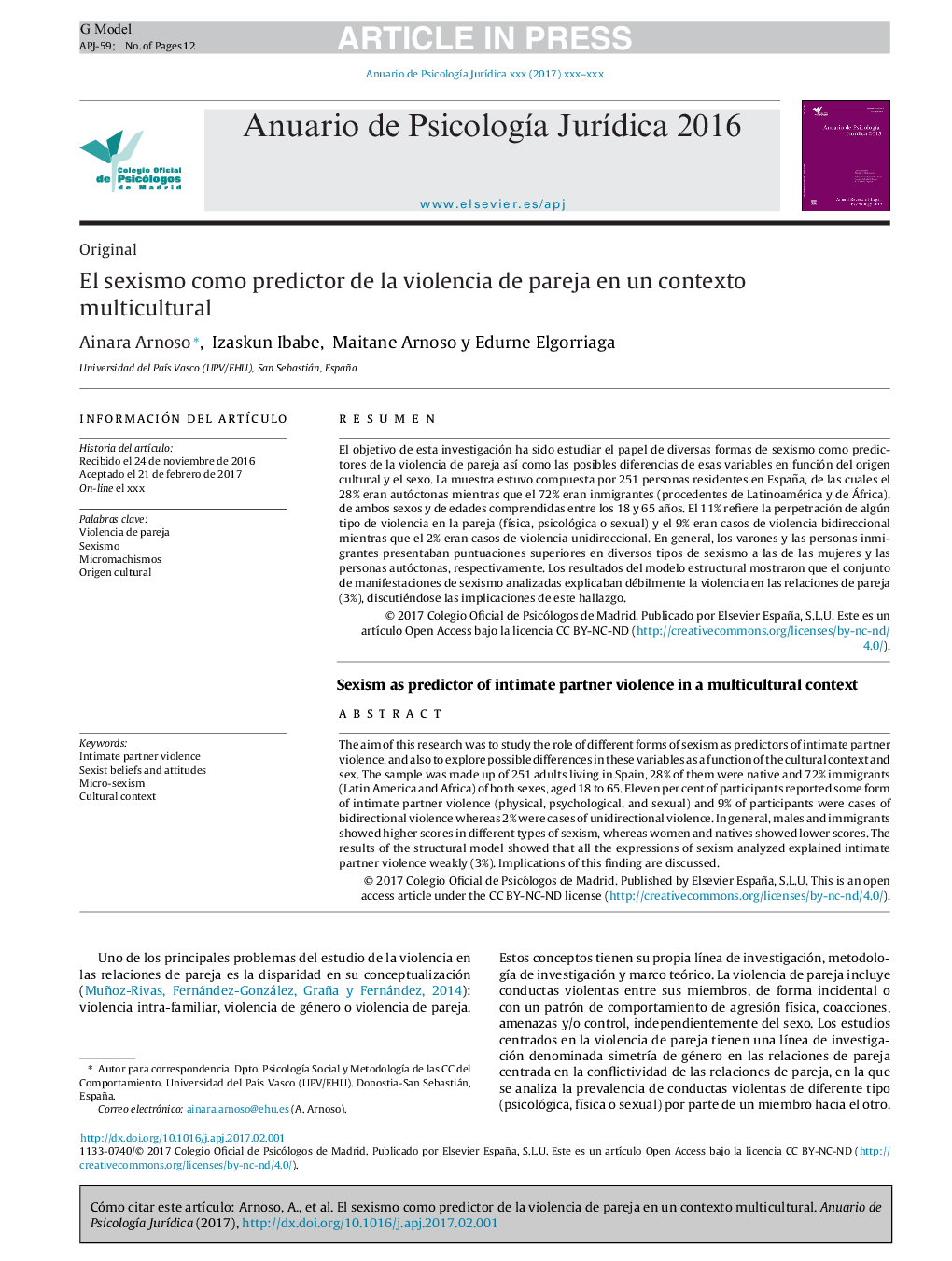ترجمه فارسی عنوان مقاله
سکساری به عنوان یک پیش بینی کننده از قضاوت خشونت در یک زمینه چند فرهنگی
عنوان انگلیسی
El sexismo como predictor de la violencia de pareja en un contexto multicultural
| کد مقاله | سال انتشار | تعداد صفحات مقاله انگلیسی |
|---|---|---|
| 154697 | 2017 | 12 صفحه PDF |
منبع

Publisher : Elsevier - Science Direct (الزویر - ساینس دایرکت)
Journal : Anuario de PsicologÃa JurÃdica, Volume 27, Issue 1, 2017, Pages 9-20
ترجمه چکیده
هدف از این پژوهش بررسی نقش الگوی های مختلف جنسیت به عنوان پیش بینی کننده خشونت شریک صمیمانه و همچنین بررسی تفاوت های احتمالی این متغیرها به عنوان تابعی از زمینه فرهنگی و جنسی است. نمونه از 251 بزرگسال ساکن اسپانیا تشکیل شده است، 28٪ آنها بومی و 72٪ مهاجران (امریکای لاتین و آفریقا) از هر دو جنس 18 تا 65 ساله بودند. 11 درصد از شرکت کنندگان برخی از انواع خشونت شریک صمیمانه را گزارش کردند ( جسمی، روحی و جنسی) و 9٪ از شرکت کنندگان در مورد خشونت دو طرفه بودند در حالیکه 2٪ موارد خشونت یک طرفه بود. به طور کلی، مردان و مهاجران نمرات بالاتری در انواع مختلف جنسیت نشان دادند، در حالیکه زنان و بومیان نمرات پایینتری داشتند. نتایج مدل ساختاری نشان داد که تمام بیانات جنس گرائی مورد تجزیه و تحلیل قرار گرفته است، خشونت شریک صمیمی ضعیف (3٪). پیامدهای این یافته ها مورد بحث قرار گرفته است.

